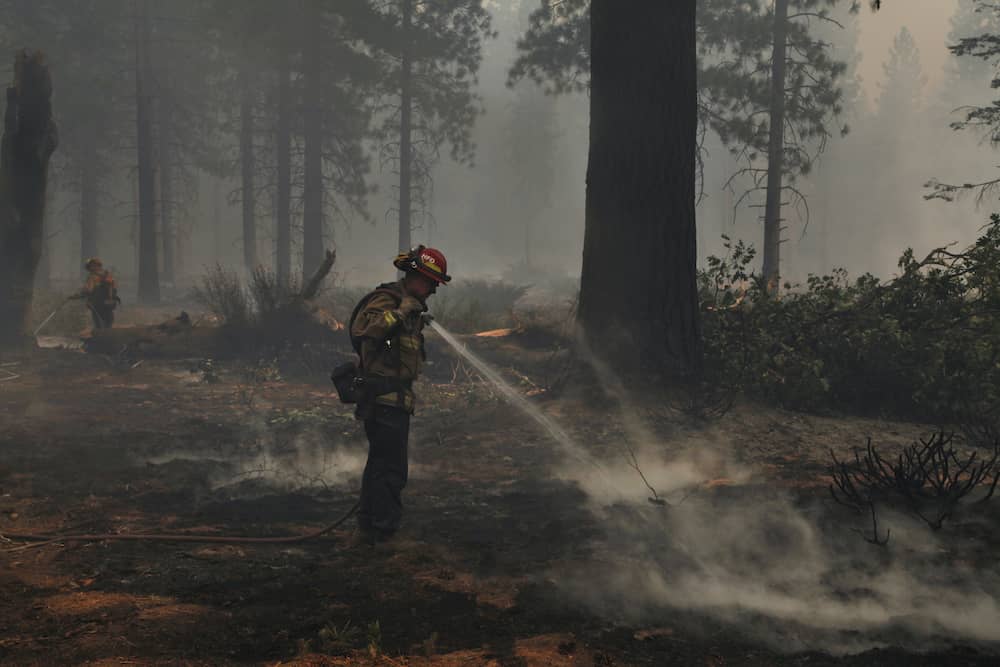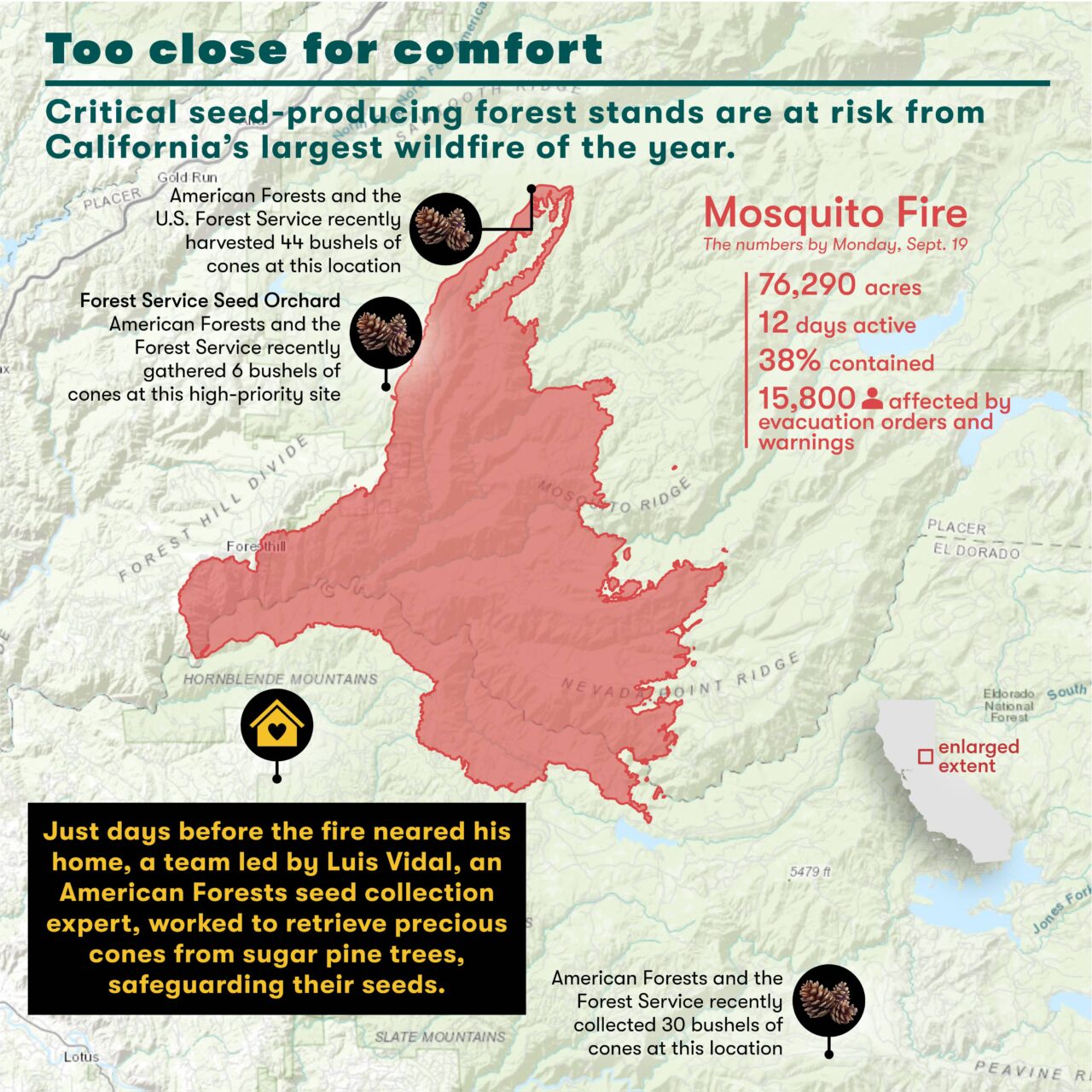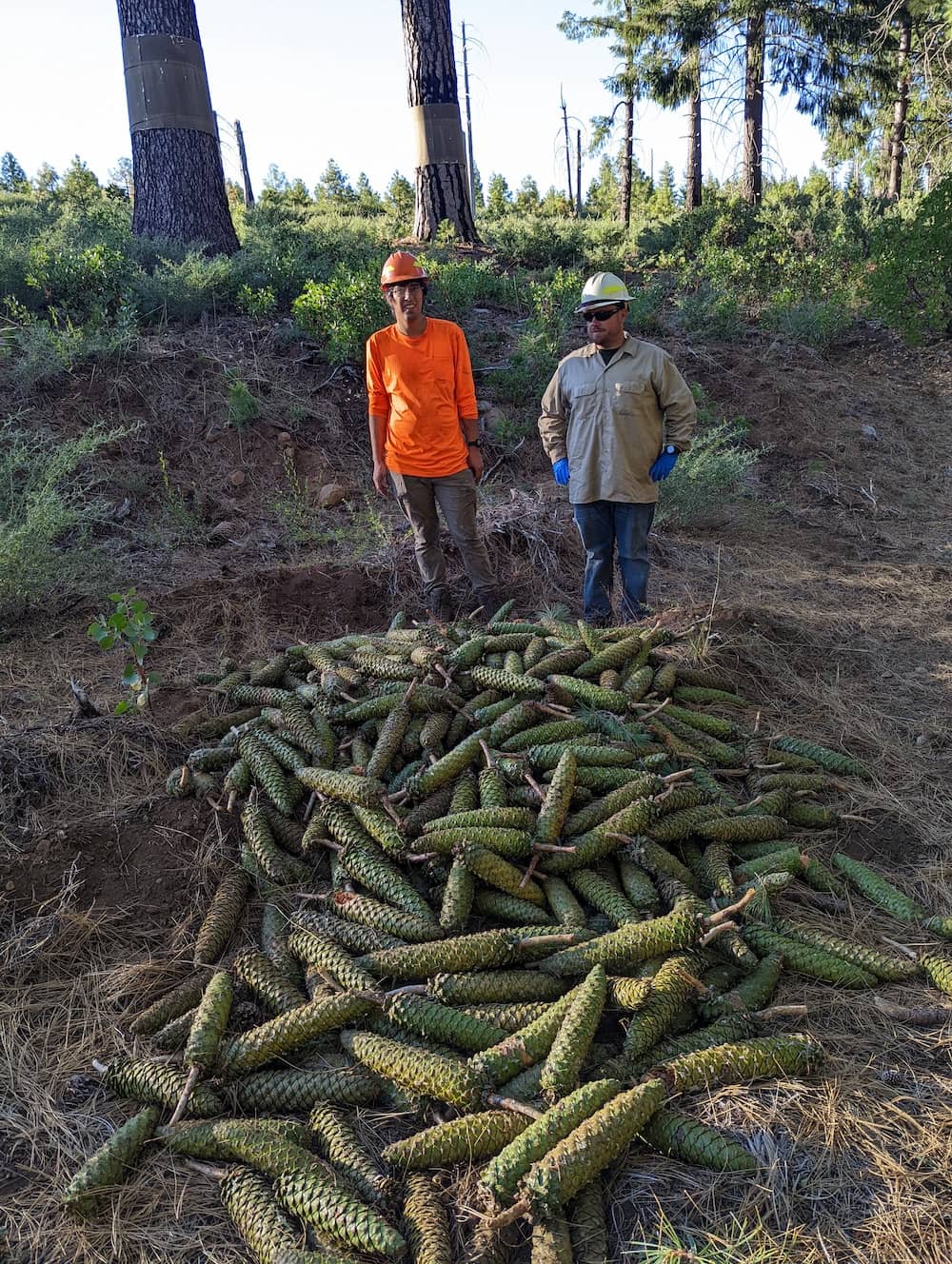
Photo Credit: Jen Osborne
Luis Vidal had kept a nervous eye on the Mosquito Fire for several days. From his parents’ house in Utah this month, he watched online as it jumped the Rubicon River and triggered a mandatory evacuation of his and other Sierra Nevada towns that faced peril with a simple shift of wind.
All of his belongings were in his room at a U.S. Forest Service ranger station where he lives and works as the Northern California reforestation manager for American Forests. “It’s part of the yearly reality of living in a forested environment in California,” says Vidal, who was born in Peru. “You always feel like you’re ready, but you’re not.”

Still, Vidal couldn’t help but be grateful. Just one week earlier, in the Eldorado and Tahoe National Forests where the fire was currently bearing down, he had led a team that managed to collect 132 bushels of precious pine cones from rare trees that are critical in efforts to stem forest losses there. That cone collection work in the Eldorado, funded by Salesforce, was canceled this time last year when the Caldor Fire threatened the same area. A handful of the rare trees could be consumed by the Mosquito Fire.
The window of opportunity to collect the cones at the right time is only about two weeks long. For two days the team’s professional climbers scaled 100-foot trees and shook their branches to dislodge more than 1,000 cones from select Ponderosa and sugar pines. The sugar pine trees were identified as being among the 3% to 5% that have genetic resistance to white pine blister rust, a disastrous disease caused by a non-native fungus. The seeds from the team’s particularly plentiful cone yield are especially important given the nation’s critical seedling shortage that challenges the movement to reforest at scale. To educate the public about this quiet crisis, this year, American Forests launched “Seed September,” a campaign that has shone a light on the problem and potential solutions.

Vidal had his own idea of how to do that: He’d set aside about 200 cones to use in a citizen science project at Dreamforce, the world’s largest software conference, which is sponsored by Salesforce. During the event Sept. 20-22, attendees would be able to cut open the cones using a special tool, pluck out the seeds, examine them under microscopes and record their observations.
Now conference-goers can also learn first-hand the importance of cone-collecting projects like this. Although by Monday the threat had lessened, a handful of trees Vidal’s team retrieved cones from remained in the fire’s trajectory.
The seeds from their cones may prove lifesaving. The vast majority of the cone collection project’s bounty sit in refrigeration at the Placerville Nursery in California. And some of their nearly 200,000 seeds will almost certainly help reforest the very areas burned by the King, Caldor and Mosquito Fires.
“Eventually the seeds we collected may very well be planted in the areas where the fire is raging right now,” Vidal says. “These are seeds for the forests of tomorrow. And that gives me hope.”